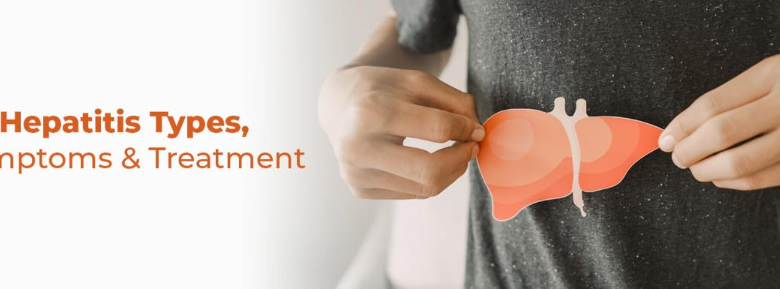Hepatitis Types, Symptoms & Treatment Options Explained

Your liver works quietly—filtering toxins, storing energy, turning food into fuel—until one day a routine blood panel shows raised enzymes. “Could it be hepatitis?” The word covers several viruses, alcohol-linked damage and even drug reactions, but the basic meaning is the same: swelling or inflammation of the liver.¹ Understanding the main hepatitis types helps you act fast, whether that means a simple vaccine, lifestyle tweak or a targeted blood test such as an HBV quantitative assay for hepatitis B viral load. Read on for a clear rundown of each type, the symptoms to watch and today’s best treatment routes.
The A-to-E of Hepatitis
The five main types of hepatitis (A to E) affect the liver in different ways, each with its own causes, risks factors, and outcomes. Let’s understand these differences:
- Hepatitis A (HAV)
How it spreads: contaminated food or water, person to person contact.
Key facts: usually short-lived; most people recover fully in a few weeks.
Prevention: safe drinking water, proper hand-washing, vaccination. - Hepatitis B (HBV)
How it spreads: blood, unprotected sex, mother-to-child at birth.
Key facts: can turn chronic; long-term infection risks cirrhosis or liver cancer.
Prevention: vaccine; sterile needles; screened blood. - Hepatitis C (HCV)
How it spreads: mainly blood-to-blood (mother to child, shared needles, unscreened transfusions)
Key facts: often “silent” for years; now curable with antiviral pills.
Prevention: Avoid needle sharing, ensure safe blood transfusions, use protection during sex, and practise injection safety.
- Hepatitis D (HDV)
How it spreads: only in those already infected with HBV.
Key facts: co-infection makes liver damage worse; prevented by the HBV vaccine. Prevention: No vaccine for HDV itself, but HBV vaccination prevents HDV infection by blocking the required host virus. - Hepatitis E (HEV)
How it spreads: contaminated water
Key facts: While it can resolve within 2-6weeks, acute liver failure can occur (fatal); especially in pregnant women with Hepatitis E.
Prevention: Avoid high-risk food/water or travel to outbreak-prone areas. Maintain good sanitation and hygiene habits.
These five viral hepatitis types differ in how they spread and linger, but share one thing in common: inflamed liver. Non-viral causes such as alcohol, fatty-liver or medication toxicity also sit under the hepatitis umbrella¹, yet the first step in any work-up is sorting out which virus, if any, is in play.
See also: New Health Insurance Norms Aids Rising Medical Expense
Spotting the Warning Signs
Hepatitis can hide for months. When symptoms do appear, they often look like a regular flu:
- Feeling tired/weak
- Fever, belly ache (upper right near the liver)
- Nausea, diarrhoea, confusion
- Dark urine and pale stools
- Itchy skin and yellowing of eyes or skin (jaundice)
If these clues stay longer than a week, ask your doctor about a targeted screening for the various hepatitis types.
Testing: Matching Tools to Each Type
Below is a detailed explanation of the various tools used to diagnose, monitor, and guide treatment for different hepatitis types:
- Blood Panels
Liver function tests are conducted to test the levels of proteins, enzymes and bilirubins. The varying levels could correspond a particular disease.
- Liverspleen Scan/Elastography
Checks the liver/spleen organ functions; elastography is used to determine the elasticity of the liver. - Biopsy
Procedure where a liver tissue sample is taken to measure disease severity.
Once the type and severity are clear, doctors can match each case with the most effective treatment, whether that’s rest, regular monitoring, or targeted antiviral therapy.
Staying Healthy After a Hepatitis Diagnosis
A hepatitis diagnosis isn’t the end of the road—it’s the beginning of a more mindful journey toward health. With the right care & precautions, you can protect your liver, manage the condition effectively, and continue to live a full, active life. Here’s how:
- Get vaccinated.
- Use sealed needles for tattoos, piercings, or injections.
- Watch your medicine use
- Don’t share razors or toothbrushes.
- Limit alcohol and hydrate well.
Support your recovery:
- Eat balanced meals and stay active.
- Go for regular liver scans and blood tests.
- Talk to family—vaccines and hygiene protect them too.
With treatment and mindful choices, living well with hepatitis is completely possible.
Last Word: Knowledge Is the Best Shield
Whether it’s a short bout of Hepatitis A Virus (HAV) from street food or a chronic battle with HBV or HCV, the liver sends warnings long before irreversible harm sets in. Recognising the hepatitis types, getting the right blood tests and starting timely treatment turns liver trouble into a manageable chapter, not a life sentence. With timely vaccinations, safe lifestyle practices, and reliable tools like the HBV quantitative assay, you can stay one step ahead of complications and keep your liver healthy and strong.



